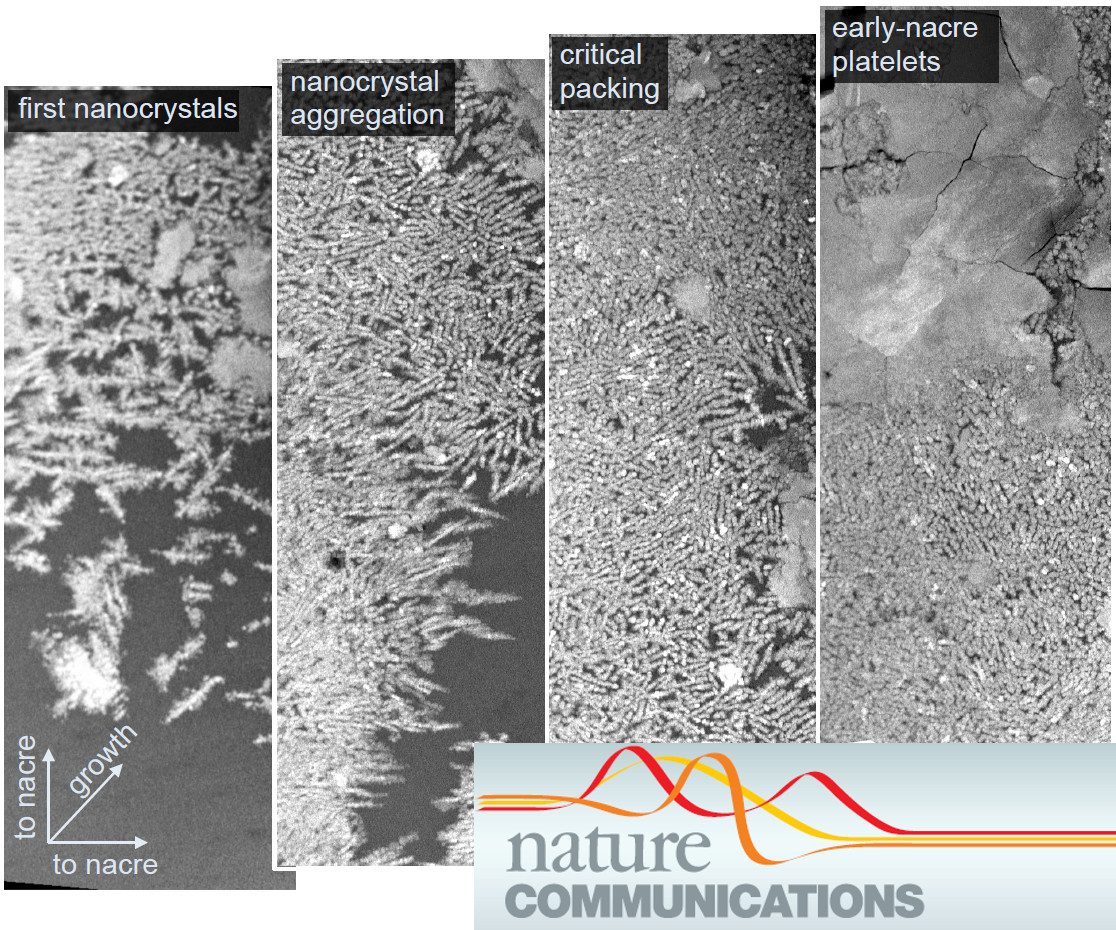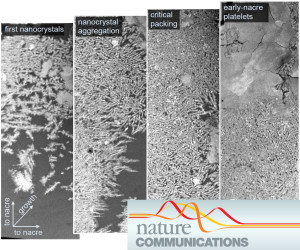Nacre forms by Nonclassical Crystallization


An international research team with Prof. S. E. Wolf from Friedrich-Alexander-University and Dr. R. Hovden, Prof. Muller and Prof. L. Estroff from Cornell University demonstrated for the first time that nacre, in the species of the Noble Fan Shell Pinna nobilis, forms by a particle-driven crystallization process and not by classical crystal growth processes. This gives unparalleled insight into process-structure-relationship properties underlying nacre formation. A combination of high-end scanning transmission microscopy with a new approach of sample preparation for biominerals, the researchers were able provide large view fields of the nacroprismatic transition of nacre documenting the processes preceeding the formation of the first tablets of nacre in Pinna nobilis. At the onset of nacre, nanoscaled particles with a size between 50 and 80 nm assemble first a fibreous network with increasing particle number density until they eventually merge into dense and space-filling nacre tablets.
Further Reading
Nanoscale assembly processes revealed in the nacroprismatic transition zone of Pinna nobilis mollusc shells
Robert Hovden, Stephan E. Wolf, Megan E. Holtz, Frédéric Marin, David A. Muller, Lara A. Estroff
Nature Communication, 2015, 6, 10097, DOI: 10.1038/ncomms10097
Press Releases:
Erstmals Perlmutt-Bildung aus Nanopartikeln nachgewiesen, FAU, EAM News
Materials scientists learn how mother of pearl is made, Cornell U News
